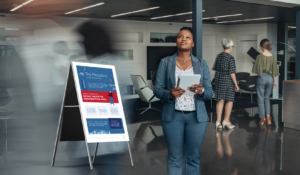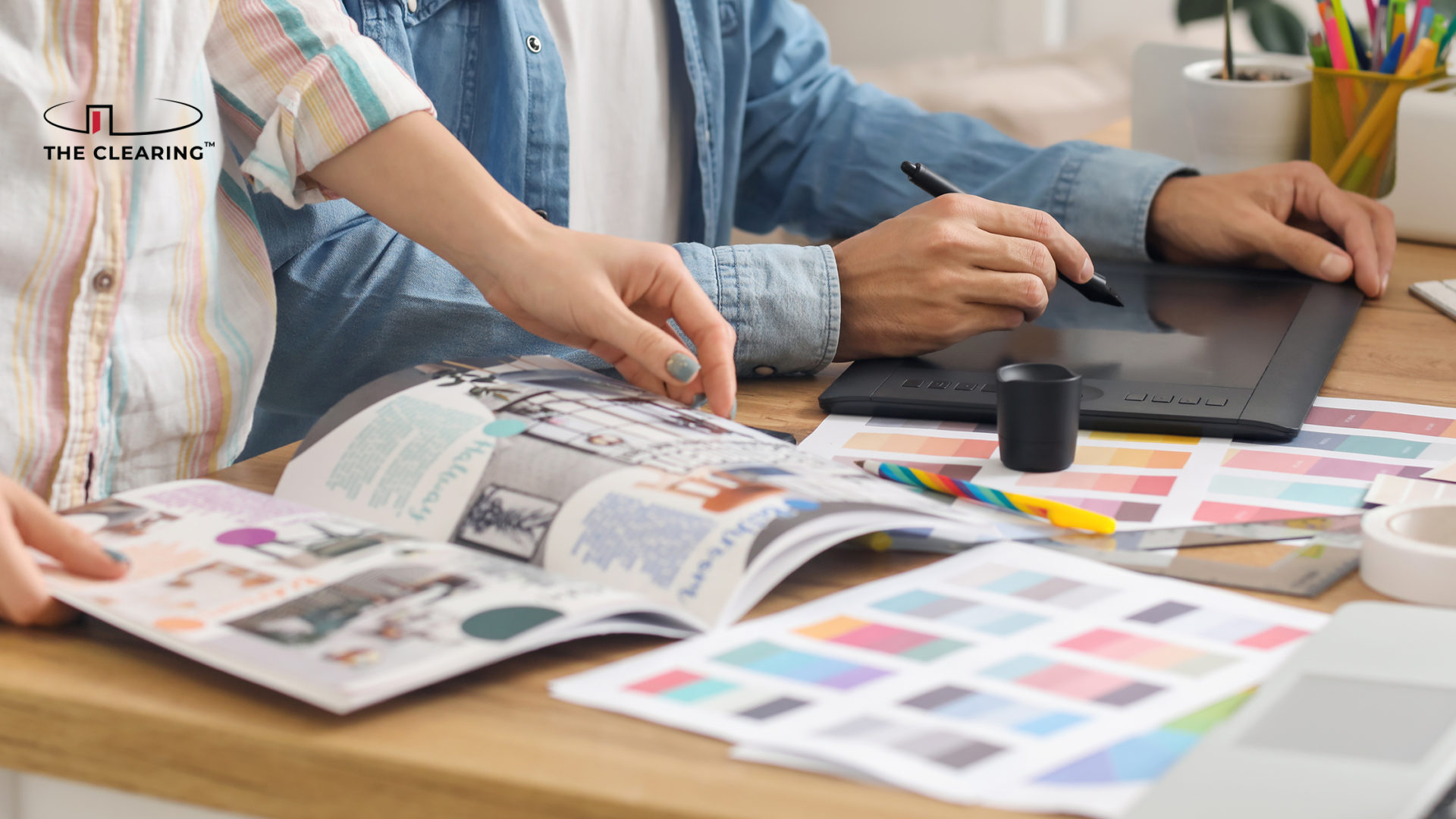Experiential Design 101
Experiential design can be many things to many people. For me, it’s more about what experiential design does and how it makes you feel instead of what it is. I consider experiential design an emotion that is evoked from entering a space or being in the presence of a beautiful mural. As an example, let’s step out of the corporate world and into the restaurant scene.
Imagine the feeling you might get entering a Michelin-starred locally owned restaurant. Consider the lighting and the open kitchen. Maybe the tables are intentionally close together and made of regional wood, the menu printed on textured paper. You’re having a very personal customer experience before you even taste the food. None of this is coincidental– it’s a design choice intended to enhance your experience and evoke a certain feeling.
Now, consider an office space. Without considering experiential design, you may encounter a sterile environment: empty walls, harsh fluorescent lighting, and uncomfortable seating. I don’t know about you, but that space does not promote creativity or foster a sense of warmth. But add artwork or employee stories, alternative lighting choices, and comfortable structured seating. It becomes the kind of place that starts to produce a more effective space where one can accomplish many different types of tasks -creative brainstorming, socializing with coworkers, heads down learning, and much more.
These examples show that at its core, experiential design really does what it says: designing with the intention to create a specific customer experience. How each individual perceives and actually experiences the original intention is the beauty and uniqueness of the final output. I relate experiential design to today’s Gen Z saying “it’s a vibe.”
Experiential design is not always easy to explain in words, but it’s a feeling that is incredibly hard to miss. It has the impact to shift mindsets, change environments, and help people empathize and communicate better with each other.
How to Leverage Experiential Design
From making diners feel special and seen to inspiring intentional and thoughtful delivery in the workplace, experiential design truly makes a difference in almost any situation. However, one specific area where it’s very useful is when people are stuck in a certain mindset. We know from studies that it’s difficult for people to switch from one task to another task or to a certain mindset quickly. Experiential design offers the opportunity for individuals to leave a space and reenter it again with a true reset or change in perspective.
Physical transformation signals to the brain that “I’m doing something different now so I can leave that task behind and start something new.” Consider the D.C. Metro. We may not think of it as experiential, but it is a setting that helps countless commuters decouple from their work environment and switch into personal mode. The familiar evening lighting and distinctive signage come to symbolize heading home or out with friends. The shift back from the Metro and into the workplace each morning is similar. Workplace design professionals use similar ideas to help people shift from heads-down work into meeting mode by varying the physical experience between individual workspaces and group areas.

Example of a physical wayfinding sign in the workplace.
The Clearing’s Approach Experiential Design
First and foremost, we base design work in what’s happening now – in the world, in the workplace, in the news. We collect and analyze the data before we begin designing anything – be it a physical space or training program. For example, we often work with executives on developing and scaling their leadership team through a number of training programs. If we discover a client’s team has become overwhelmed with keeping up online, we recommend conducting those trainings live. That switch from a daily digital only focus to an in-person learning environment provides their brain the physical stimulus needed to effectively switch gears and an opportunity for increased creative solutions.
Second, we approach design with intentionality. Consider The Clearing’s participation at CoreNet’s global Summit the past two years. We recognized that people had been stuck indoors for long periods during this time, so we created an experience intentionally rooted in nature utilizing natural textures and calming elements. We also set up a simple and accessible activity that encouraged attendees to interact with their surroundings. This was designed to engage people excited to reconnect with the outside world – even at a conference.
Finally, we approach every engagement with an open mind. Each touchpoint is an amazing opportunity to rethink what you are putting out in the world. As a designer, I might have an idea of previously proven successful solutions, but every client and their environments are different. By working with our consultants and facilitators to leverage their specific data, we can ensure each part of our delivery approach pulls on best practices while still curated to each client’s needs and customer experiences. Acknowledging that we do not always know what people need and that these needs are always changing is critical to experiential design.
Three Ways for Leaders to Leverage Experiential Design
- Be observant – and ask questions. Simply stay in tune with what’s happening with your teams – and if you see something amiss don’t ignore it. Acknowledge and address the need for a change. You never know when changing the environment may be just what people need to gain a fresh perspective. For example, if you notice people using email during meetings, don’t simply ban laptops. Ask why. It may be that people are so slammed with meetings they feel they don’t have time to answer emails in a timely manner. The experiential change required may be evaluating your meeting culture and determining what’s actually necessary, who actually needs to be there, and redistributing time accordingly. Changing that workplace experience may help people enter a more engaged mindset during future meetings.
- Start small. Let’s say you receive employee feedback that team members feel they can’t find time to leave their desks during the day in order to reset. As we now know, switching tasks is more difficult when you are stuck in a certain mindset and physically stuck in the same spot, meaning effective and thoughtful delivery may be negatively impacted. s. Fortunately, getting people out from in front of the computer doesn’t require an expensive company retreat. Instead, use what you have. Organize or encourage time throughout the day for walks around the block or on a nearby trail. Host lunchtime yoga. Promote movement breaks. Small activities such as these serve the same purpose as the metro example above – helping people leave and reenter a space recharged.
- Be present. Everything you do is an experience, right? From playing with your kids to getting a coffee to raking the leaves. You never know when inspiration may strike, and simply being present allows you to experience and observe these spaces in a thoughtful way. The experience of walking into a coffeehouse from a busy street may seem mundane. However, if you observe what the change in environment or the first sip of coffee does for your psyche, it may spark ideas on how small changes in your workplace could positively affect employee experience.
If you feel your workplace is in need of a reboot, considering experience design may make a positive impact. And remember, experiential design concepts apply beyond physical space. So, whether you and your team are Work from Home (WFH), Work from Office (WFO), or Hybrid there are nearly endless ways to implement the ideas we’ve talked about today. If you’d like to know more, I’d love to hear from you. I can be reached at robyn.klem@theclearing.com.


 The Clearing’s Employee Experience
Improvement model, adapted from Itam
& Ghosh, 2020, focuses on three objectives:
The Clearing’s Employee Experience
Improvement model, adapted from Itam
& Ghosh, 2020, focuses on three objectives: 


















